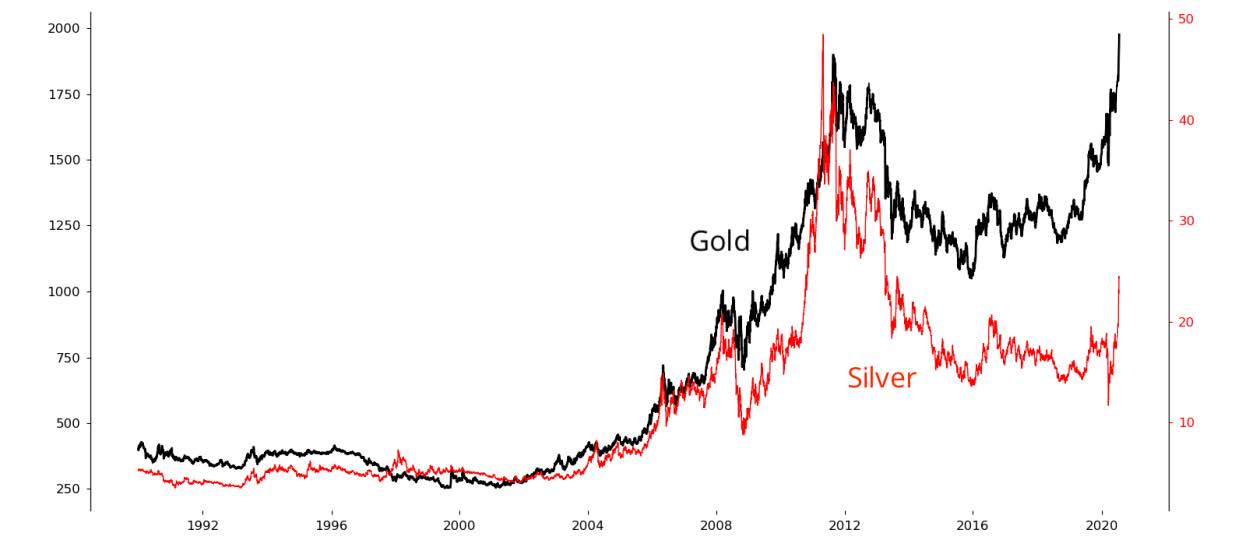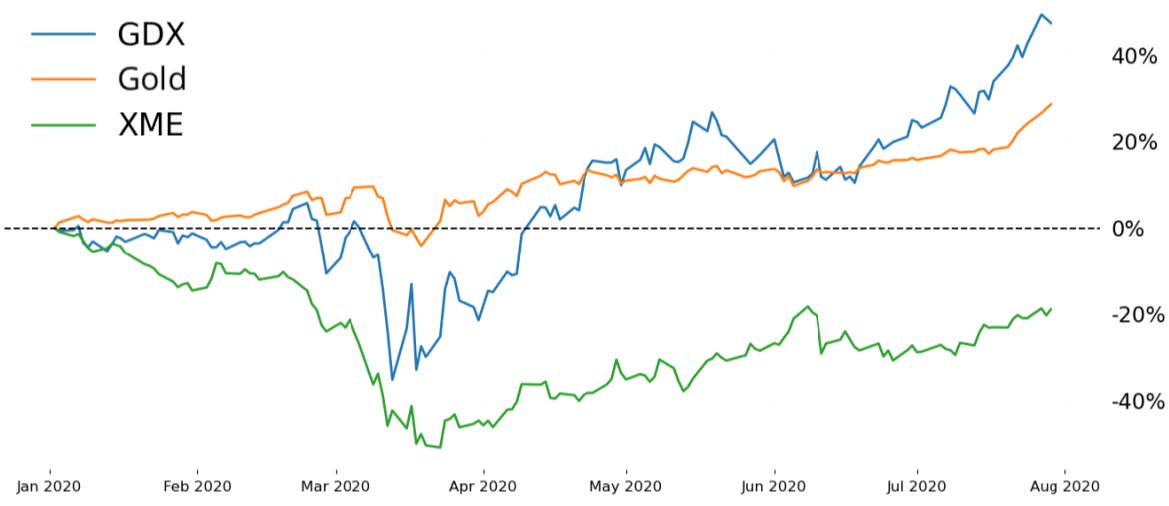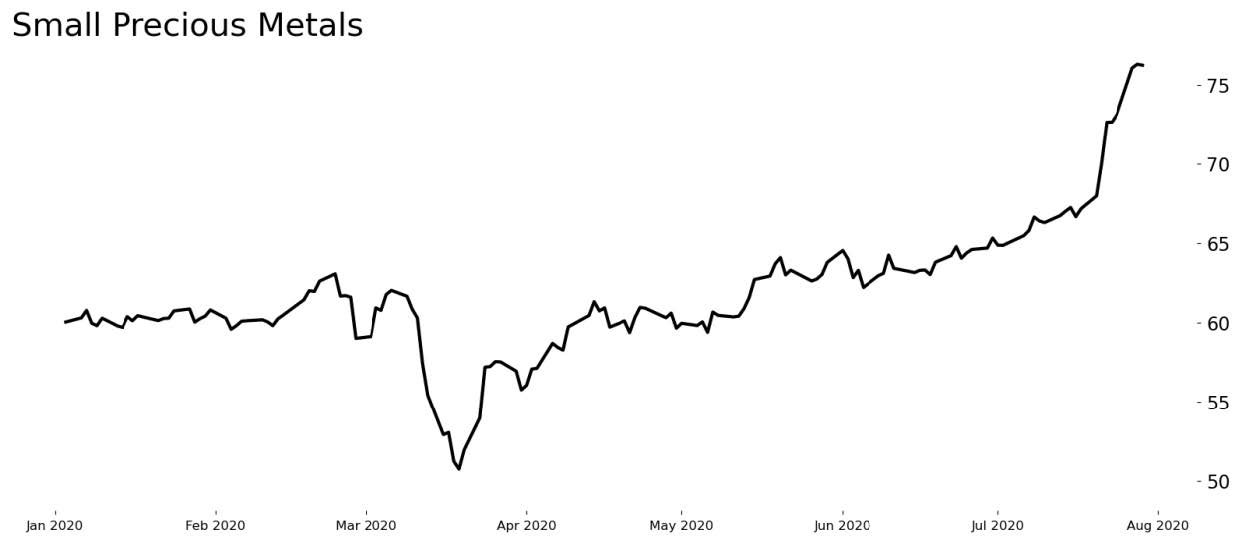The Small Exchange: Precious Metals: ETFs vs Futures
Gold is hanging around its most expensive prices since futures on the commodity started trading almost half a century ago in 1974. While the price levels have increased, the action around gold has not. Volatility has only risen slightly in gold products, and it is in fact still below its historical average. As gold feels out new highs in a more calculated manner, its metallic companion silver has almost doubled in volatility.

Source: dxFeed Index Services (https://indexit.dxfeed.com)
Whether it’s by price extremes or large moves, the curiosity of many stock traders is piqued. But those familiar with stocks may have a hard time finding the right precious metal product to speculate on since the choices vary widely in exposure, size, and look.
Metals or Mining Stocks?
Exchange-traded funds (ETFs) that package stocks in the mining business might be the easiest first venture into metals, but ETFs such as XME and GDX can diverge greatly from the commodity itself. Their correlation to the equity market can push them one way as metals pull them the other creating significant long-term deviations.

Source: dxFeed Index Services (https://indexit.dxfeed.com)
Some ETFs that track commodities more closely, like GLD and SLV, can be heavy on capital usage. For example, the shares needed to see daily movement in an SLV position greater than $50 would cost between $1,000 and $2,000. These expensive ETFs make large returns on capital difficult to attain.
Capital Efficiency at What Cost?
Futures contracts on gold and silver can offer large fluctuations for smaller capital requirements than stocks and ETFs, but traditional metal futures such as /GC and /SI can be too large for the everyday investor. Both markets have seen daily moves exceeding $2,000 just in the last week, and silver futures have made multi-thousand dollar moves a regular event.
New futures products like Small Precious Metals (/SPRE) present smaller investors the capital efficiency of futures at a more manageable rate than traditional products. The product moves close to $100 on the average day, and its initial margin is usually around a few hundred dollars. Also, it combines gold and silver into the same product, so you don’t have to decide on which precious metal to trade.

Source: dxFeed Index Services (https://indexit.dxfeed.com)
